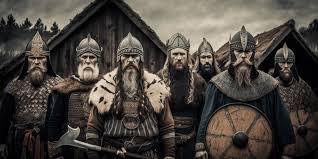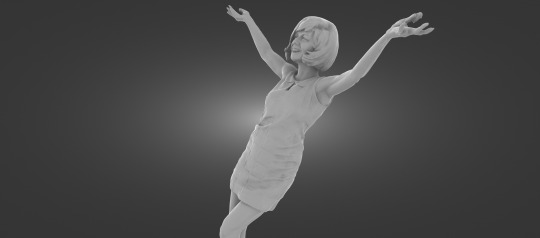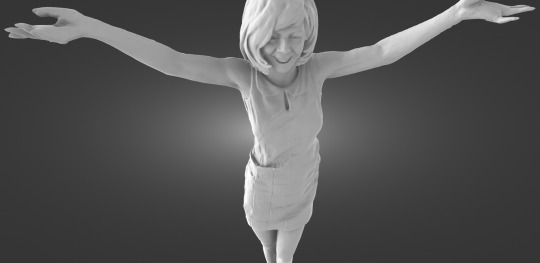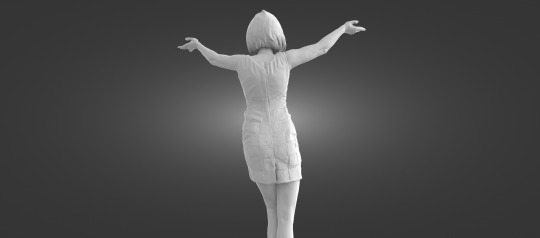#CulturalHistory
Explore tagged Tumblr posts
Text

The Fight on the Bridge (1882-1885) by Arnold Böcklin
#arnoldböcklin#symbolismart#symbolistart#swissart#19thcenturyart#arthistory#fantasyart#mythologyart#fineart#classicalart#romanticism#painter#europeanart#artlovers#historicalart#classicart#artcollector#artappreciation#visualart#artgallery#oldmasters#artinspiration#artisticheritage#culturalhistory#landscapepainting#fantasticart#romanticart#mythicalart#arnoldböcklinart#antiqueart
147 notes
·
View notes
Text

#interestingfacts 88
Follow for what’s trending and interesting around the world 🌍
#interestingfacts#AvocadoHistory#FoodOrigins#CulturalHistory#Etymology#FoodFacts#Agriculture#Linguistics
4 notes
·
View notes
Text

One of my earlier posters/maps features Austria-Hungary. It highlights its borders, the internal divisions into provinces, and their respective capital cities.
#AustriaHungary#HistoricalMaps#Cartography#MapLovers#HistoryBuff#Austria#Hungary#HabsburgEmpire#DualMonarchy#HistoryNerd#MapsOfEurope#VintageMaps#Geography#MapArt#HistoricalPoster#EuropeanHistory#OldBorders#HistoryEnthusiast#Provinces#CapitalCities#AustriaHungaryMap#HistoricBorders#EmpireMaps#HistoryCommunity#MapDesign#CulturalHistory#HistoricEurope#PoliticalDivisions#HistoryIllustration#MapPoster
4 notes
·
View notes
Text
Something about Vikings
In the popular imagination, the typical Viking warrior is depicted wearing a large horned helmet. However, representations from that era do not show any evidence of such headgear. Despite their widespread portrayal in this way, there is no historical proof that Vikings favored helmets with horns.
It remains intriguing to understand why horned helmets became such a defining symbol of the Viking people in modern pop culture. This iconography originated between the late 18th century and the early 19th century, when the Romantic movement brought Germanic and Norse sagas and mythology back into the spotlight. The idea of horns likely emerged among 19th-century Swedish writers or contemporary European painters, who based their reconstructions on Greek and Latin accounts. These accounts mentioned Norwegian and Germanic priests wearing horned helmets during specific pagan rituals over 2,000 years earlier.
In 1825, artist Gustav Malmström published an illustrated edition of the Saga of Frithiof, a Swedish poem by Esaias Tegnér inspired by events from the 8th century (although Tegnér’s source text dates back to the 1300s). This work gained immense international fame and sparked a fascination with Scandinavian peoples of the migration period that persists today. Malmström’s illustrations became iconic, and from 1825 onward, Scandinavians—frequently labeled as Vikings—were consistently depicted wearing horned helmets in every reproduction.

#VikingMyths#HornedHelmets#VikingHistory#RomanticEra#ScandinavianCulture#VikingIconography#PopCultureVikings#HistoricalMisconceptions#VikingWarriors#NorseMythology#VikingFiction#CulturalHistory#GustavMalmström#VikingSaga#NorseLegends
2 notes
·
View notes
Text

ICYMI: How the Atomic Bomb Shaped the Culture of the 1950s http://dlvr.it/THpxBz
0 notes
Text
What is Samhain? All about the Pagan holiday that inspired Halloween

#Pagan#Paganism#Spirituality#NeoPaganism#Wicca#CulturalHistory#Religion#NatureBasedReligion#Polytheism#ModernPaganism#HistoryOfReligion
0 notes
Text
Cilla Black 3D Scan













Scanned using the Creality Otter with the Wireless Bridge, it took about 5 minutes to scan. It tackled this statue fantastically, even with the tiny gap at the back.
The life-size bronze statue of Cilla Black on Liverpool’s Mathew Street stands as a tribute to the beloved singer and television presenter, commemorating her significant contributions to the city’s rich musical heritage.
Unveiled on January 16, 2017, the statue is situated outside the original entrance of the Cavern Club—the very spot where Cilla Black worked as a cloakroom attendant before rising to fame in the 1960s. The unveiling coincided with the 60th anniversary of the Cavern Club, a venue renowned for its pivotal role in the careers of numerous artists, including The Beatles.
NME
Artists Emma Rodgers and Andy Edwards collaborated on the sculpture, capturing a youthful Cilla with her arms outstretched, embodying her vibrant stage presence. The dress of the statue features squares depicting images and text from Cilla’s life and career, including song titles, lyrics, and personal quotes. Notably, the base resembles a 45 RPM record of her hit single “You’re My World,” adorned with an anemone flower, reflecting her wedding bouquet.
Emma Rodgers
Commissioned by Cilla Black’s sons—Robert, Ben, and Jack Willis—the statue serves as a gesture of gratitude to Liverpool for the outpouring of love following their mother’s passing in 2015. Robert Willis expressed that his mother would have been “very flattered, proud and honoured” by the tribute.
NME
The Cilla Black statue not only honors her legacy but also celebrates Liverpool’s enduring influence on British music and culture.

#CillaBlack#Liverpool#MathewStreet#CillaBlackStatue#TheBeatles#LiverpoolStatues#BritishMusic#CavernClub#3DScanning#CrealityOtter#WirelessBridge#DigitalPreservation#LiverpoolHeritage#MusicIcons#UKLandmarks#3DPrinting#CulturalHistory
0 notes
Text
Explore the fascinating evolution of writing in this comprehensive video! From the earliest pictographs and cuneiform tablets to the development of modern alphabetic scripts, we trace the journey of how humans have recorded language and ideas across millennia.
Discover the origins of writing in ancient civilizations like Mesopotamia and Egypt, the invention of paper, and the printing press that revolutionized communication. Learn about the different writing systems used throughout history, including hieroglyphics, Chinese characters, and the Latin alphabet, and how they shaped cultures and societies around the world.
Join us as we dive into the history of writing, examining how this powerful tool has connected civilizations, preserved knowledge, and transformed human communication.
#HistoryOfWriting#WritingSystems#AncientScripts#Cuneiform#Hieroglyphics#EvolutionOfWriting#LanguageHistory#AncientCivilizations#WritingTools#PrintingPress#Alphabet#Pictographs#ModernScripts#HistoryOfLanguage#CommunicationHistory#WritingTechnology#CulturalHistory#HistoryOfBooks
0 notes
Text
"Discover the hidden stories behind Easter traditions in 'Cracking Open Easter: Exploring Traditions and Origins.' Unveil the origins of Easter eggs, bunnies, and more as we journey through centuries of celebration and symbolism. From ancient roots to modern customs, explore the essence of this springtime festival with us."
#EasterTraditions#EasterOrigins#SpringFestival#EasterSymbols#CulturalHistory#HolidayExploration#TheJuniorAge#KidsNewspaper#ChildrenNewspaper#NewspaperForKids#Newspaperforchildren#KidsNewspaperIndia#ChildrenNewspaperInIndia
0 notes
Text

Palazzo Contarini del Bovolo, Venice (1891) by Ferdinando Ongania
#ferdinandoongania#venetianart#bookpublishing#italianart#arthistory#venicearchitecture#historicbooks#finebooks#rarebooks#bookcollector#publishinghistory#19thcenturyart#visualart#historicalart#artinspiration#classicart#bookdesign#artbooks#italianheritage#culturalhistory#antiquebooks#vintagebooks#artpublishing#architecturalart#historicarchitecture#booklovers#veniceart#artcollector#historicalpublishing#venetianarchitecture
79 notes
·
View notes
Link
#2023#AnimalSpiritGuides#AnimalSymbolism#August#August3#CulturalHistory#familiars#folklore#ModernWitchcraft#Witchcraft
0 notes
Text
Complete restoration and reopening of Notre Dame de Paris.
youtube
Notre-Dame de Paris 2.0
1 note
·
View note
Link
#Beatlesalbumcoversrecreation#Beatlesanniversary#Beatlesarrival#BeatlesreturnfromNorthAmericatour#Beatles'PanAmflightfromHeathrow#HeathrowAirportculturalmoments#HeathrowAirporthistoricalmilestones#HeathrowAirportpopculturehistory#HeathrowAirporttribute#LondonAirport#Terminal5Beatlescelebration#TheBeatles
0 notes
Link
#Grootfontain#Namibia#HobaMeteorite#HistoricalSignificance#NaturalBeauty#OldGermanFort#ColonialHistory#NamibianLandmarks#WaterbergPlateauPark#Wildlife#NamibianCountryside#GeologicalWonders#TouristAttractions#AfricanTravel#HobaMeteoriteSite#HistoricalLandmarks#NamibianHeritage#NatureExploration#TravelNamibia#AfricanLandscapes#CulturalHistory#TourismNamibia#LandmarkSightseeing#HobaMeteoriteVisit#HistoricalSites#NaturalWonders#NamibianAdventure#TravelDestinations#AfricanGeology#ScenicBeauty.
0 notes
Text

Picturing yourself in this paradise?
National Marine Sanctuary of American Samoa is the perfect place to escape to, even if it's just in your mind! This remote national marine sanctuary preserves incredible biodiversity, as well as rich cultural history. (Photo: NOAA. Image description: A view of cliffs and an island over the ocean.)
#EarthIsBlue#Islands#Paradise#Scenic#LandscapePhotography#Biodiversity#CulturalHistory#PacificIslands
38 notes
·
View notes